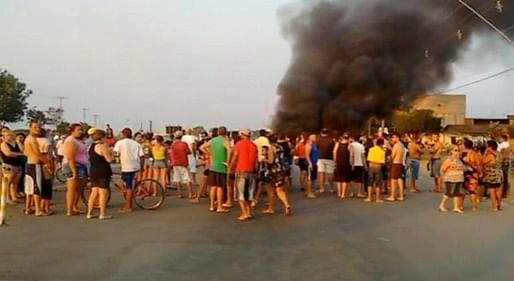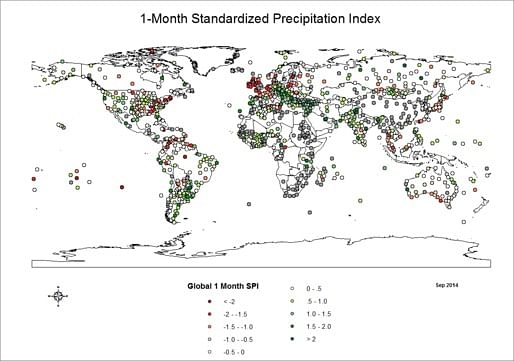

South America's biggest and wealthiest city may run out of water by mid-November if it doesn't rain soon. São Paulo, a Brazilian megacity of 20 million people, is suffering its worst drought in at least 80 years, with key reservoirs that supply the city dried up after an unusually dry year. — Thompson Reuters Foundation
One of the most important reservoirs in Brazil is the Cantareira watershed, which supplies around 45% of the city of São Paulo's water. Back in August, authorities warned that the city, which is the largest on the continent, could run out of water in 100 days if the waters dropped to 12%. Now, supplies are at a record 3.3% and creating shortages for over 30% of the city's 44 million residents. According to the Financial Times, residents in 70 other cities in the state of São Paulo have experienced water outages, some of which have gone on for days. Despite some minor efforts to curb usage – such as reducing water pressure by 75% at night –, Vicente Andreu, president of Brazil's Water Regulatory Agency, has stated that São Paulo should prepare for a "collapse like we've never seen before" in the next few weeks.
President Dilma Rousseff, who just won reelection, had used the drought as a major campaign issue. She claimed that Governor Geraldo Alckmin, whose a member of the opposition party, has not been doing enough to curb the water shortages, even asserting that he refused federal money that was offered. Reuters reports that vital restrictions on water usage never were passed because of fear of reprisals in these elections.

Part of the reason that the drought is so exceptional is because of climate change and deforestation, scientists assert. A leading climate scientist, Antonion Nobre states, "Humidity that comes from the Amazon in the form of vapor clouds - what we call 'flying rivers' - has dropped dramatically, contributing to this devastating situation we are living today." The Amazon rainforest in Brazil has been ravaged by deforestation in recent years. A forested area the size of New York City was hewed over the course of a single year, between 2012 and 2013. The lack of trees – which once released billions of gallons of water – coupled with changes to the global climate are, quite literally, drying the region out.
The economic toll from the drought is already beginning to be felt and will likely grow worse. Half of the country's textile producers are in São Paulo and are unable to continue their dyeing processes because of the water scarcity. Solvay’s Rhodia chemical plant halted some of its production, as well. Meanwhile, concerns that the drought will affect the country's soybean production has brought up prices worldwide. The state of São Paulo is responsible for a third of Brazil's GDP, so any slowdown there would bring down the country's overall growth.

Brazil has been racked by protests for the past several years. Now, people are rioting explicitly because of water (or the lack thereof). In the city of Ito, outside of São Paulo, people have been burning buses and hijacking water tankers.
Of course, the state of São Paulo is not the only place in the world currently experiencing water shortages. According to the Global Drought Information System, other regions experiencing extreme drought conditions include: Northern China, Somalia, Kenya, the southwest United States, and most of Australia.

No Comments
Block this user
Are you sure you want to block this user and hide all related comments throughout the site?
Archinect
This is your first comment on Archinect. Your comment will be visible once approved.